Introduction
In the city, we find different problems that affect the citizen and which its resolution depends, generally, on a public entity. Some of these problems can be the accumulation of garbage and bad smells or the bad condition of some spaces.
Citizens have different traditional means to communicate their complaints to the public administration. One of the reasons is that the attention is fragmented and there is no solid system for collecting complaints, many of the complaints remain just that, complaints. It’s an inefficient system where accountability is diluted in the process itself.
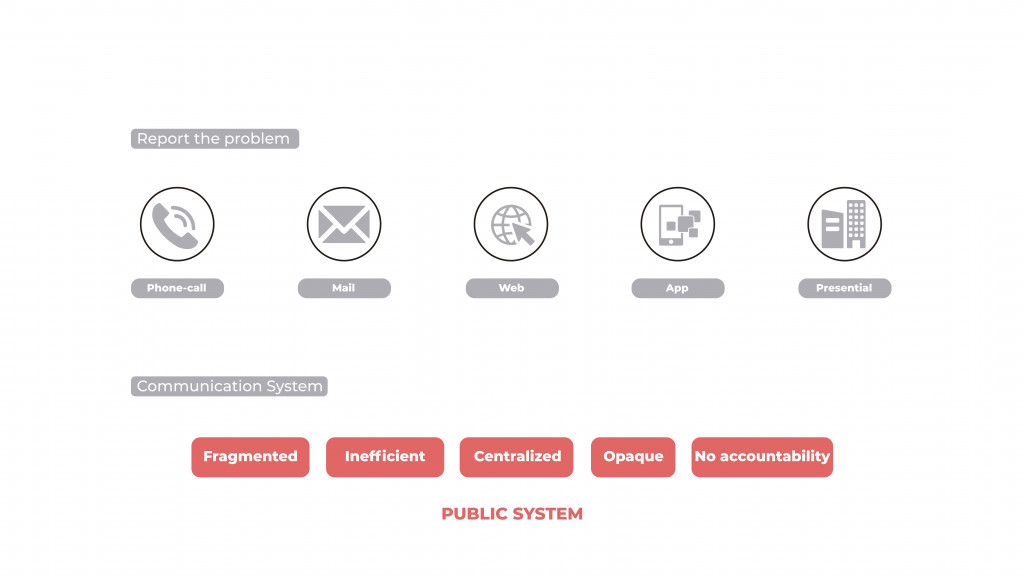
How it works today
Today as a valid alternative option we can contact the Ombudsman, who promotes good administration at the EU level investigating complaints from the citizens. It is an intermediary entity between the citizen and the administration whose objective is to ensure the proper functioning of the administration.
The problem is that the Ombudsman bases its system on what the citizen can contribute individually, which is not usually something tangible and clear. The citizen has different ways of communicating a complaint but always individually and through different formats, which can make it difficult to identify common complaints about an issue.
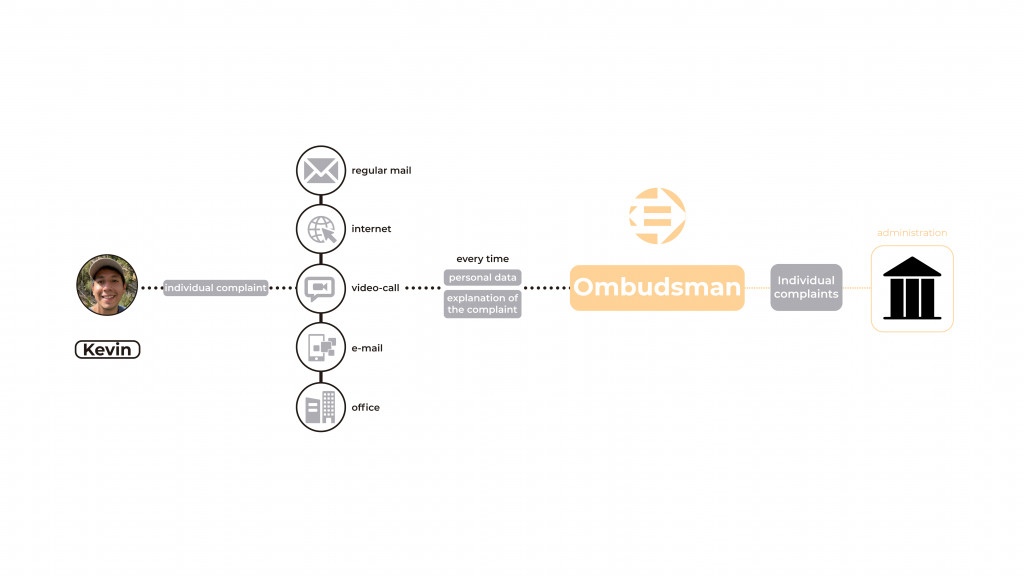
Proposal
What we propose is a decentralized system that allows the citizen to report a complaint and seek support from other people who suffer the same thing. We connect the system to the ombudsman. In this way, we provide the appropriate means for them to communicate group problems supported by the citizens and by all the information they can provide. The same system allows us to follow the different processes and analyze the different solutions taken by the public administrations in different regions.
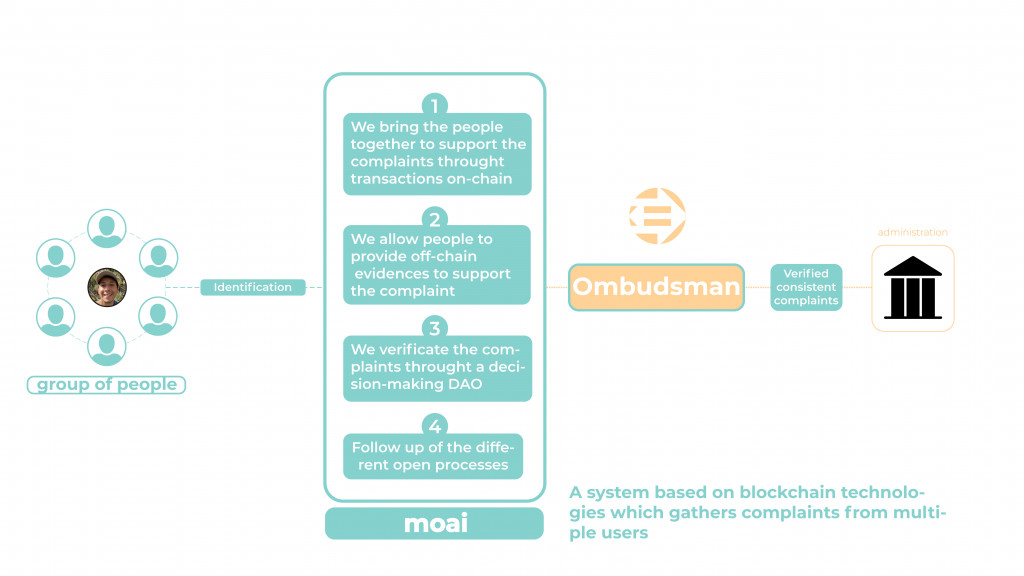
Proposal Process
We define the complaint process as follows:
- 1 – Kevin, our model citizen, registers in the system and provides his personal data. This step is only done once, you are already an official member.
- 2 – Then Kevin opens a new complaint and the system executes the first transaction to the blockchain that contains a new utility token created for that problem. He can also upload additional information as evidence to an external database.
- 3 – During a period of time other people can vote on this problem to support it, which means new transactions of one utility token per user and new off-chain information. All the tokens are locked in a safe.
- 4 – Once the period concurs there is a DAO that is in charge of verifying the problem. It is manual decision-making. They analyze that the on-chain and off-chain information is coherent and aligned. Once verified, they unblock the safe.
- 5 – Then, the tokens start to work and sign the right smart contract which will be sent automatically to the ombudsman. In this way, the organization has a structured and verified database to be able to communicate with the administration and present the problem to them.
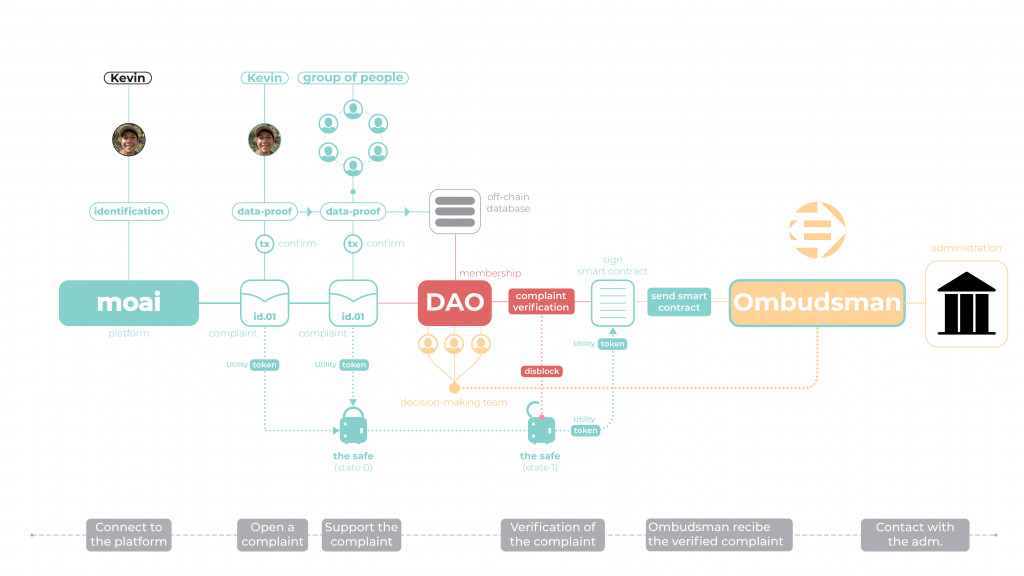
The MOAI platform
The platform aims to facilitate the user’s experience in collecting problems and participating in support of existing problems. Only after the log in our user, Kevin can decide to open a new claim or explore the platform to support complaints posted by other users. On the complaints page, he will find all the problems reported by other users. For each complaint he can check the related information, the number of votes received for support, and the time limit for the support phase. By clicking on votes he can express his opinion by simply supporting with a vote or with more information like comments or multimedia files that can help to verify the problem. In the “under verification” section he will view the problems selected from the previous phase and which are under verification by the DAO. Complaints that have been verified by DAO will be reported in the “verified” section, where Kevin can follow the resolution process, the solutions proposed, and the commitment of the stakeholders involved over time.In the best practices section, the solutions proposed and implemented by Barcelona or other administrations are reported in macro categories. This will be important to evaluate the commitment of the administrations but also to share solutions implemented for similar problems.
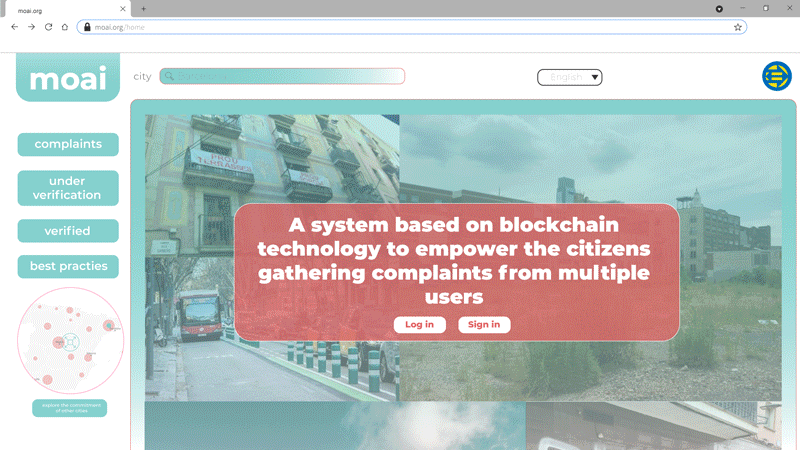
Conclusion
To conclude we want to clarify what happens on-chain and what happens off-chain along the process. The on-chain transactions are used to vote and finally, once the tokens are unlocked by the DAO, they are used to sign a smart contract and send it to the ombudsman. The off-chain primarily collects all the information linked to the complaints and allows the DAO to use this database to verify the on-chain-off-chain consistency. From this diagram, we can see the on-chain process of the tokens from the user to the Ubundusman.
The system aims to empower the citizens and make them feel that they can change their city.
MOAI, Reporting problems in the city is a project of IAAC, Institute for Advanced Architecture of Catalonia developed at Master in City & Technology in 2020/21 by students: Inigo Esteban Marina, Simone Grasso, and faculty: Maria-Luisa Marsal Llacuna